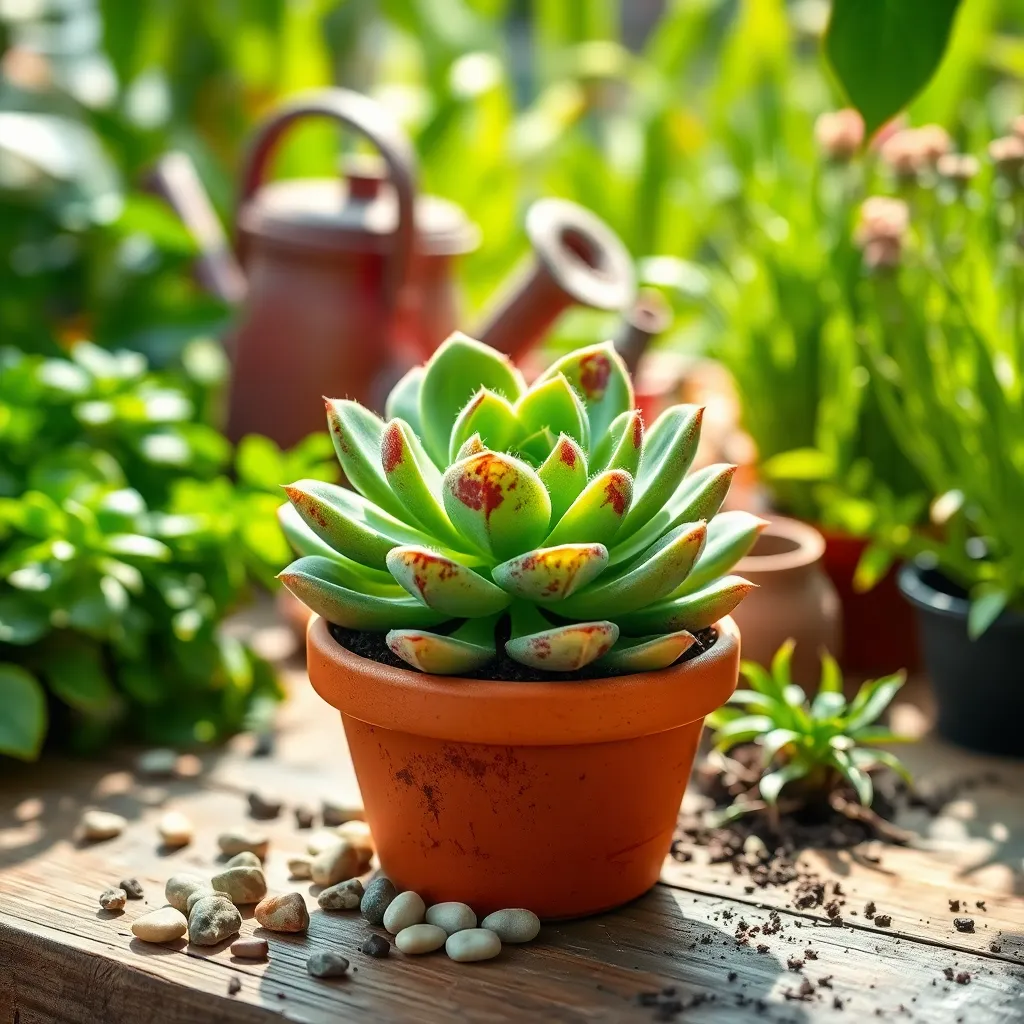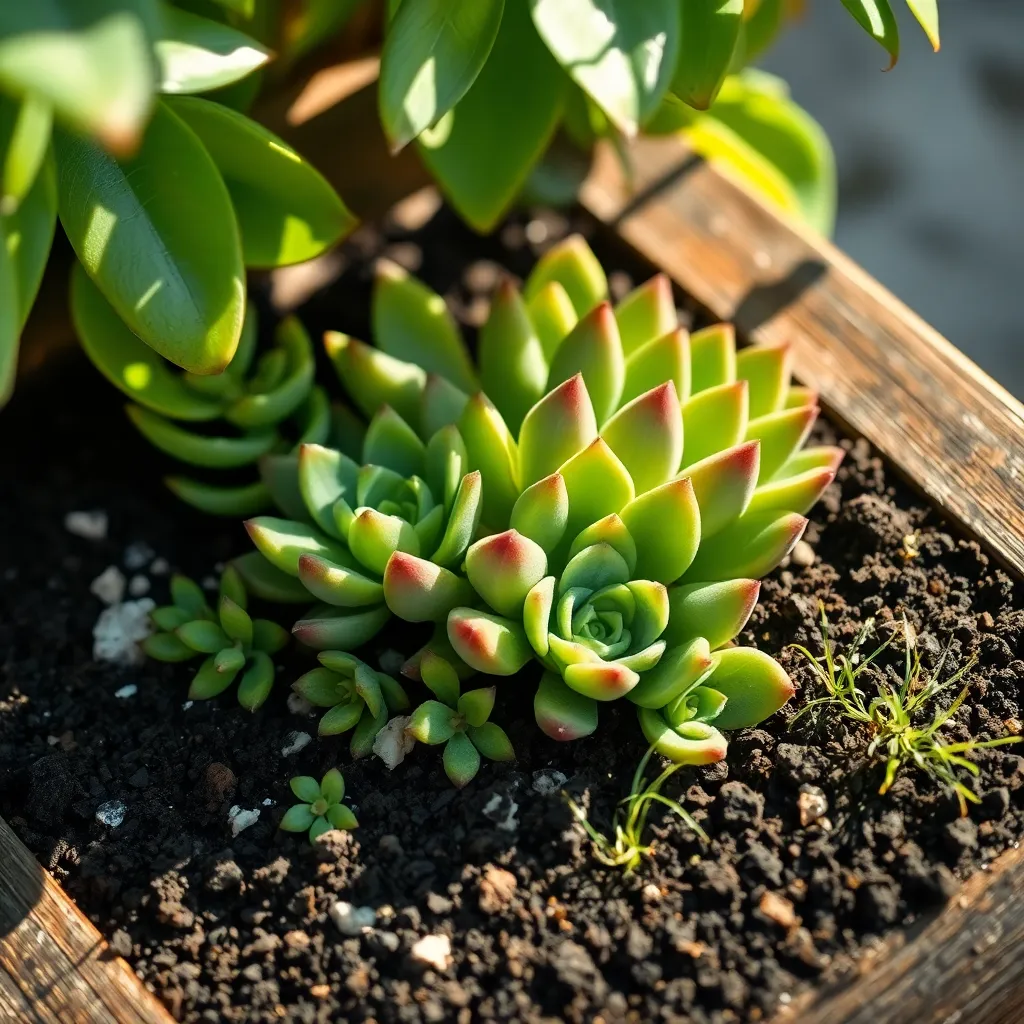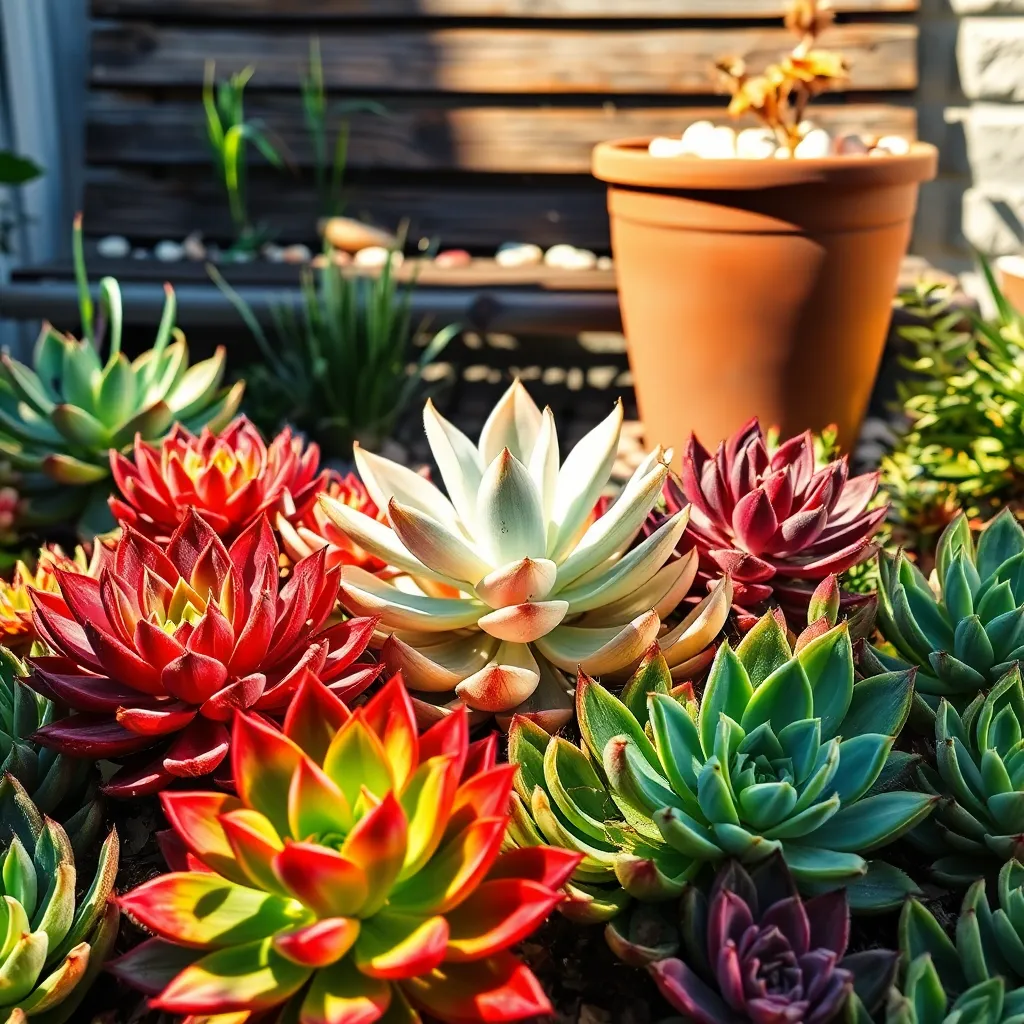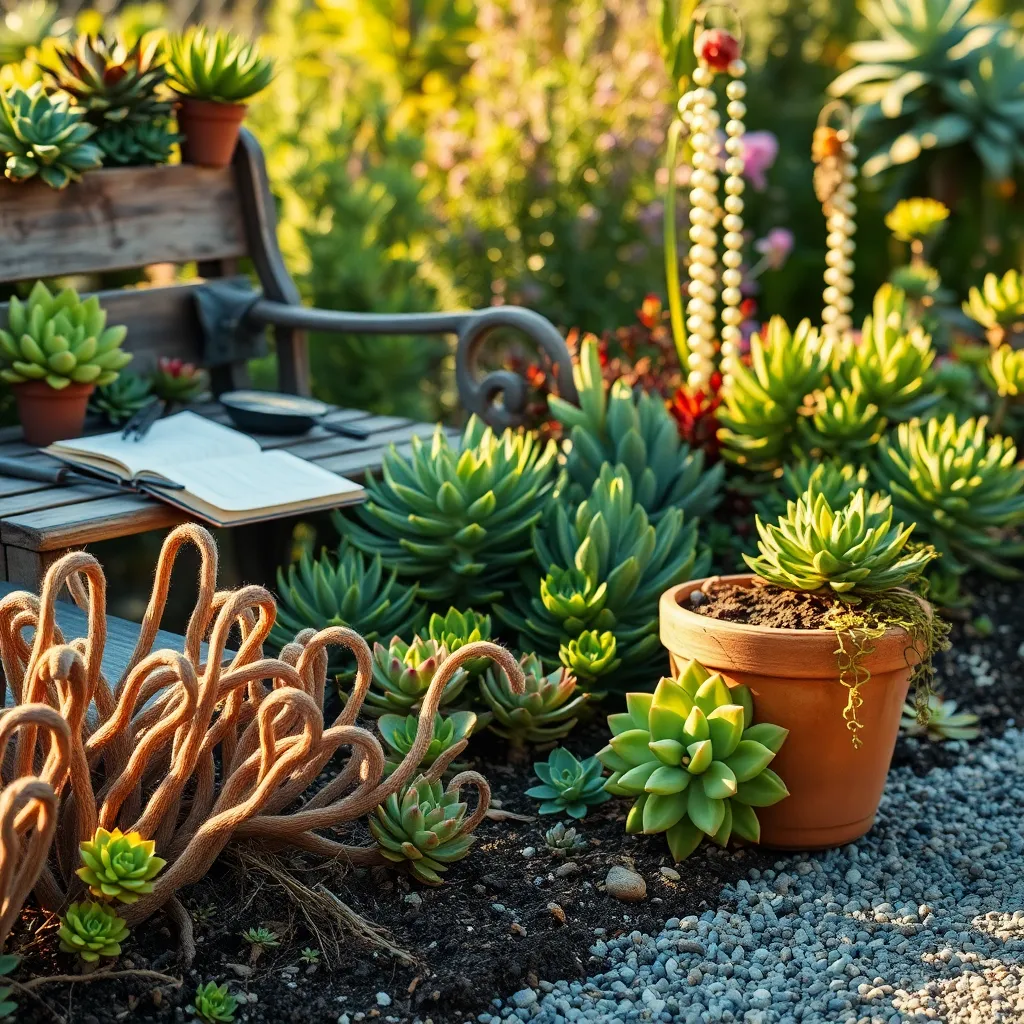There’s a certain allure to succulents that captivates gardeners of all skill levels, from the novice potter to the seasoned green thumb. Their diverse forms and delightful textures make them a favorite choice for adding a touch of charm and elegance to any space. However, succulents, with their unique needs, can sometimes be a bit puzzling, leading even experienced gardeners astray. Understanding these charming plants’ nuances is essential, as it can mean the difference between a thriving succulent garden and one that struggles to survive.
In this article, you’ll discover the seven common mistakes that often trip up succulent enthusiasts, shedding light on how to sidestep these pitfalls effectively. Whether you’re just dipping your fingers into the world of succulents or you’ve been nurturing these beauties for years, there’s always more to learn. We’ll delve into the specifics of watering, lighting, and soil preferences, ensuring you have the knowledge to cultivate healthy and vibrant succulents. By the end, you’ll be equipped with practical tips and insights that will transform your succulent-growing experience, making your efforts not just fruitful but also deeply satisfying.
Overwatering Leading to Rot

Overwatering is one of the most common mistakes gardeners make with succulents, often leading to root rot. To prevent this, it’s crucial to understand that succulents store water in their leaves and stems, meaning they require less frequent watering compared to other plants.
Consider using a well-draining soil mix specifically formulated for succulents and cacti. This type of soil typically contains a blend of materials like sand, perlite, and small gravel, allowing excess water to drain away quickly and preventing the roots from sitting in moisture.
It’s important to establish a proper watering schedule by observing the plant’s needs rather than sticking to a fixed routine. Generally, succulents should be watered when the top inch of soil feels dry to the touch, which might mean watering every one to two weeks depending on the climate and time of year.
For more advanced care, consider the technique of “bottom watering” to ensure even moisture distribution without saturating the leaves. Simply place the pot in a shallow tray of water and let the plant absorb moisture through the drainage holes for about 10-15 minutes, then remove any excess water.
Ignoring Proper Drainage Needs

Proper drainage is crucial for succulent health, as these plants are particularly susceptible to root rot when waterlogged. Ensure your pots have drainage holes to allow excess water to escape, preventing the roots from sitting in water.
Choose a well-draining soil mix to further support proper drainage. A mix specifically designed for cacti and succulents, often containing sand, perlite, or pumice, is ideal for these plants.
When planting succulents in garden beds, it’s vital to amend heavy soils like clay with coarse sand or gravel. This modification improves drainage and mimics the natural arid environments succulents thrive in.
For advanced gardeners, consider elevating your succulent beds by creating mounds or using raised planters. This technique enhances drainage and provides a stunning visual effect, highlighting your plants as focal points in the garden.
Using the Wrong Soil Type

Choosing the wrong soil type for your succulents can lead to poor growth and health issues. Succulents thrive in well-draining soil that mimics their natural arid environments, so using regular potting soil can be detrimental.
To ensure your succulents flourish, select a soil mix specifically designed for them, often labeled as “cactus and succulent mix.” These mixes are formulated to provide excellent drainage, usually containing components like sand, perlite, and pumice.
For those who enjoy DIY projects, you can create your own succulent soil by mixing two parts potting soil with one part sand and one part perlite or pumice. This custom blend enhances drainage and prevents root rot, which is a common issue when succulents sit in moist soil.
Advanced gardeners can experiment by adjusting the soil mix based on the specific needs of different succulent species. Some may prefer a slightly grittier mix, while others might thrive with a bit more organic matter, so observe your plants and adjust accordingly.
Exposing to Excessive Sunlight

Succulents are known for their ability to thrive in bright environments, but exposing them to excessive sunlight can be detrimental. Prolonged exposure to harsh, direct sunlight can cause sunburn, manifesting as brown or white patches on the leaves.
To prevent sunburn, gradually acclimate your succulents to increased sunlight. This can be done by placing them in a spot with filtered light or partial shade, especially during the hottest part of the day.
For beginners, it’s important to understand that succulents can thrive with about six hours of indirect sunlight. If you notice your plants stretching or leaning towards the light, it may indicate they need more exposure, but be cautious not to overdo it.
Advanced gardeners might consider using a light meter to measure the sunlight intensity, ensuring it’s not too harsh. Alternatively, repositioning plants seasonally or using sheer curtains can help control the light they receive.
Neglecting Seasonal Care Adjustments

Many gardeners overlook the importance of seasonal care adjustments for their succulents, which can lead to poor growth. Succulents have different needs depending on the time of year, and understanding these changes is crucial for their health.
In the winter months, succulents typically require less water as their growth slows down. Reducing watering frequency to once every four to six weeks can prevent root rot, which is common when succulents are overwatered during dormant periods.
Conversely, during the spring and summer, succulents enter an active growth phase and may need more frequent watering. It is advisable to water them deeply but infrequently, allowing the soil to dry out completely between waterings to mimic their natural dry habitat conditions.
Light exposure should also be adjusted with the seasons; during winter, succulents benefit from more sunlight, as natural daylight is often reduced. Moving them to a south-facing window can help ensure they receive adequate light, promoting stronger, more vibrant growth.
Choosing Unsuitable Pot Sizes

Choosing the right pot size is crucial for the healthy growth of succulents, but it’s a mistake many gardeners make. A pot that’s too large can hold excess moisture, leading to root rot, while a small pot can restrict growth and cause the plant to become root-bound.
It’s essential to select a pot that is just slightly larger than the root ball of the succulent. This size allows the roots to establish themselves without overwhelming them with too much soil, which retains moisture. Terracotta pots are excellent choices as they are porous and help the soil dry out between waterings.
For beginners, a good rule of thumb is to leave about one inch of space between the edge of the pot and the plant. This space allows for some growth while ensuring the pot is not overwhelmingly large. Advanced gardeners might consider using a pot with drainage holes to further prevent water from stagnating at the bottom.
Additionally, using the right soil mix is as important as choosing the pot size. Opt for a well-draining succulent mix or create your own by combining regular potting soil with sand or perlite. Water your succulents only when the top inch of the soil feels dry to the touch, ensuring they thrive in their appropriately sized home.
Overcrowding in Containers

Overcrowding in containers is a common mistake that many succulent enthusiasts make. When too many succulents are planted in a single pot, they compete for resources like water and nutrients, which can hinder their growth.
To avoid overcrowding, it’s crucial to understand the space requirements of each type of succulent you’re growing. Generally, each succulent needs about an inch of space around it to allow for proper air circulation and root expansion.
Planting succulents too closely can also lead to increased humidity levels, which may cause root rot—a common issue with these drought-resistant plants. To prevent this, use a well-draining soil mix, such as a combination of cactus soil and perlite, which helps reduce moisture retention.
For gardeners looking to maximize their container arrangements, consider using vertical planters or tiered pots. These designs allow each plant its own space while still creating an aesthetically pleasing display.
Conclusion: Growing Success with These Plants
In nurturing your relationship garden, avoiding common pitfalls is key to flourishing bonds. We’ve explored seven vital concepts: communication, trust, quality time, understanding, compromise, appreciation, and shared goals. Just as succulents thrive with proper care, relationships blossom with mindful attention to these elements. Now, take a moment to reflect on one area where you can make a positive change today. Whether it’s dedicating time to listen more intently or expressing gratitude more openly, small steps can lead to meaningful growth.
Remember, relationships are dynamic and need tending just like plants. Save this article as your go-to guide for nurturing these essential aspects, so you’re always prepared to cultivate a loving and supportive partnership. Bookmark it now for those times when you need a gentle reminder of what truly matters.
Looking ahead, envision a future where your relationships are as resilient and vibrant as a well-tended succulent garden. With dedication and care, you have the power to create lasting connections that enrich your life. Embrace this journey with optimism and watch your relationships thrive.







